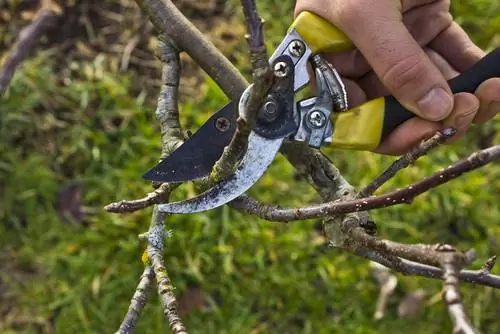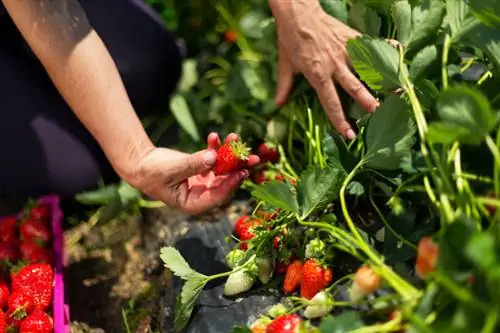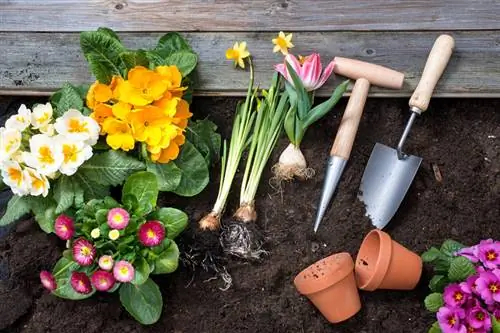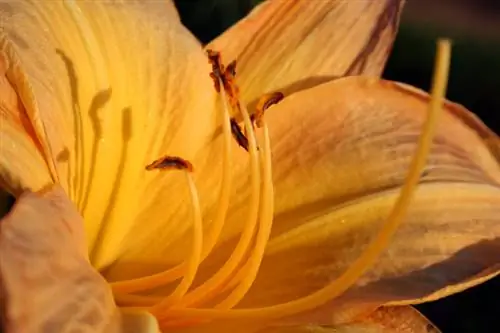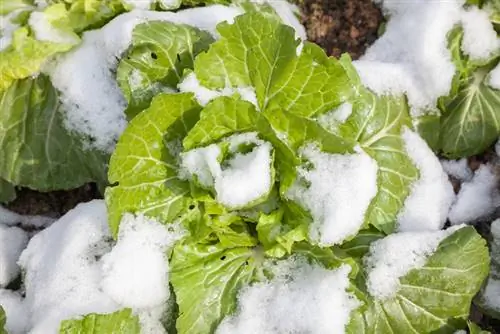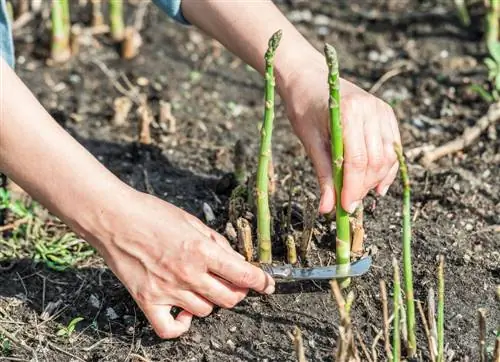- Author admin [email protected].
- Public 2023-12-16 16:46.
- Last modified 2025-01-23 11:21.
Crabapple impresses with abundant flowers and colorful fruits, without annual pruning care. To ensure a well-formed silhouette and to maintain flowering, pruning from time to time makes sense. Read this guide to find out when and how to cut crabapples correctly.
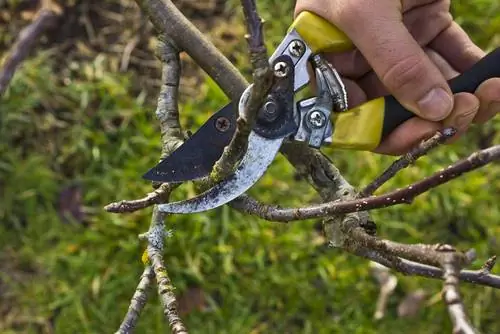
How do you cut a crabapple correctly?
To properly prune a crabapple, carry out topiary pruning after flowering, relief pruning in autumn and thinning and rejuvenation in late winter. Pay attention to growth, fruit formation and legal regulations.
Topiary pruning after flowering
When it comes to pruning tolerance, a crabapple is on par with the real apple tree. If you have problems with the shape of the shrub or crown, a planned topiary will restore the well-groomed appearance. As an early bloomer, a date after the flowering period is primarily considered because buds are laid for the next flowering period in late summer. How to cut a crabapple into shape:
- Cut back strongly branched scaffold shoots by a third
- Excessively long, drooping shoots lead to a side shoot that is further inward
- Remove branches directed towards the interior of the bush or crown
- Care: do not clean out wilted flowers
When cutting, please remember that you are reducing the autumnal fruit decorations. The deeper the pruning, the fewer apples adorn the tree. Furthermore, you collide with the requirements of the Federal Nature Conservation Act if the topiary goes beyond this year's growth.
Relief cut in autumn
A crabapple at its best may still require the use of scissors. Under ideal conditions, apples will form in droves. Under the colorful weight, the branches lean massively towards the ground and threaten to break. You shouldn't let it get to that point.
You can solve the problem with a relief cut. To do this, slim down the relevant branches to a conveniently positioned, outward-facing side shoot. Where the piece of shoot to be removed and the young wood fork, place the scissors.
Thinning out and rejuvenating in late winter
Please note a late winter pruning date for your crabapple at intervals of three to four years. The aim of the measure is to clear out dead wood and preventative rejuvenation. How to do it professionally:
- Best time is in February
- Tighten dead shoots in the bush at ground level, in the tree on a branch
- Cut off one of the oldest scaffold shoots for continuous rejuvenation
- Important: Do not intersect shoots with buds or shorten them to the first bud
During the leafless winter period, it can be a difficult task to reliably identify dead wood. If there are doubts about the condition of a ground or crown shoot, a vitality test will provide clarity. Scrape off some of the bark and examine the tissue that appears. Brown, dried out tissue has died. Light to green coloring and juicy consistency signal floral life.
Tip
A wide variety of varieties offers the right crabapple for every design wish. Nature lovers choose red-fruited varieties because birds prefer to eat red apples. Yellow-fruited crabapples, such as Wintergold or Butterball, are suitable for long-lasting autumn decorations.

